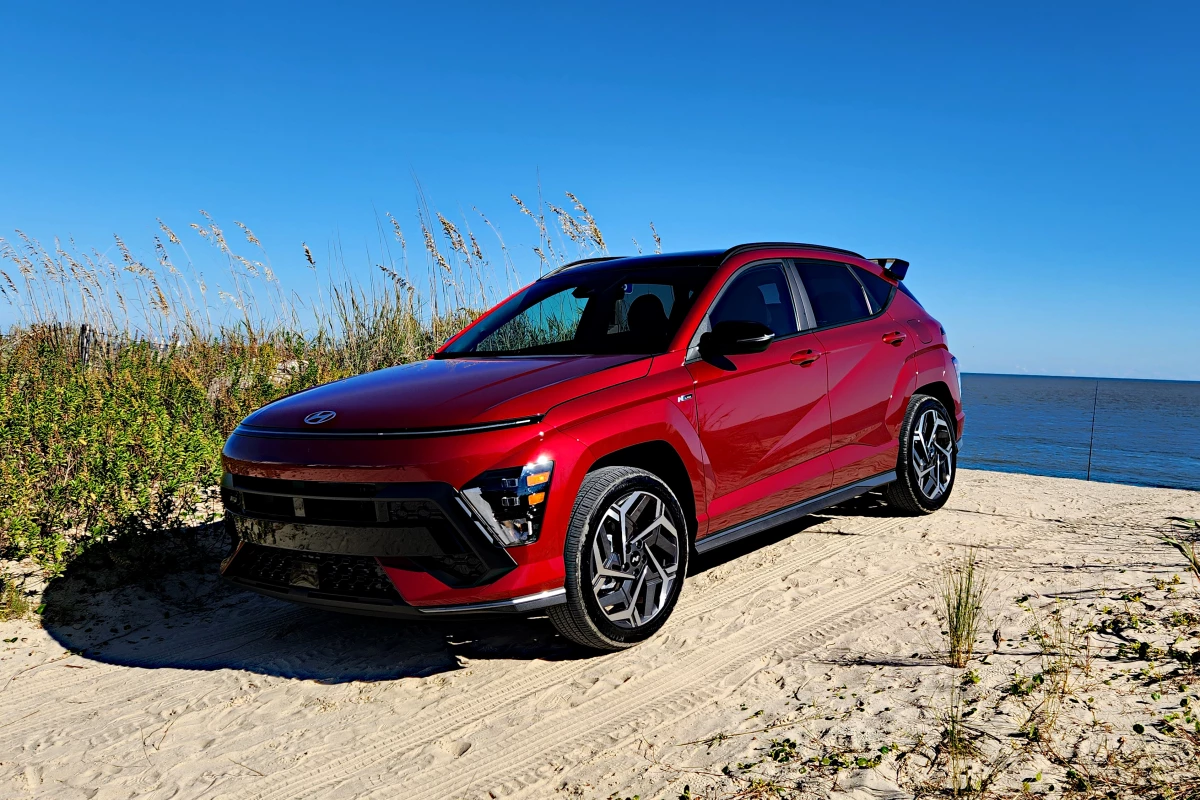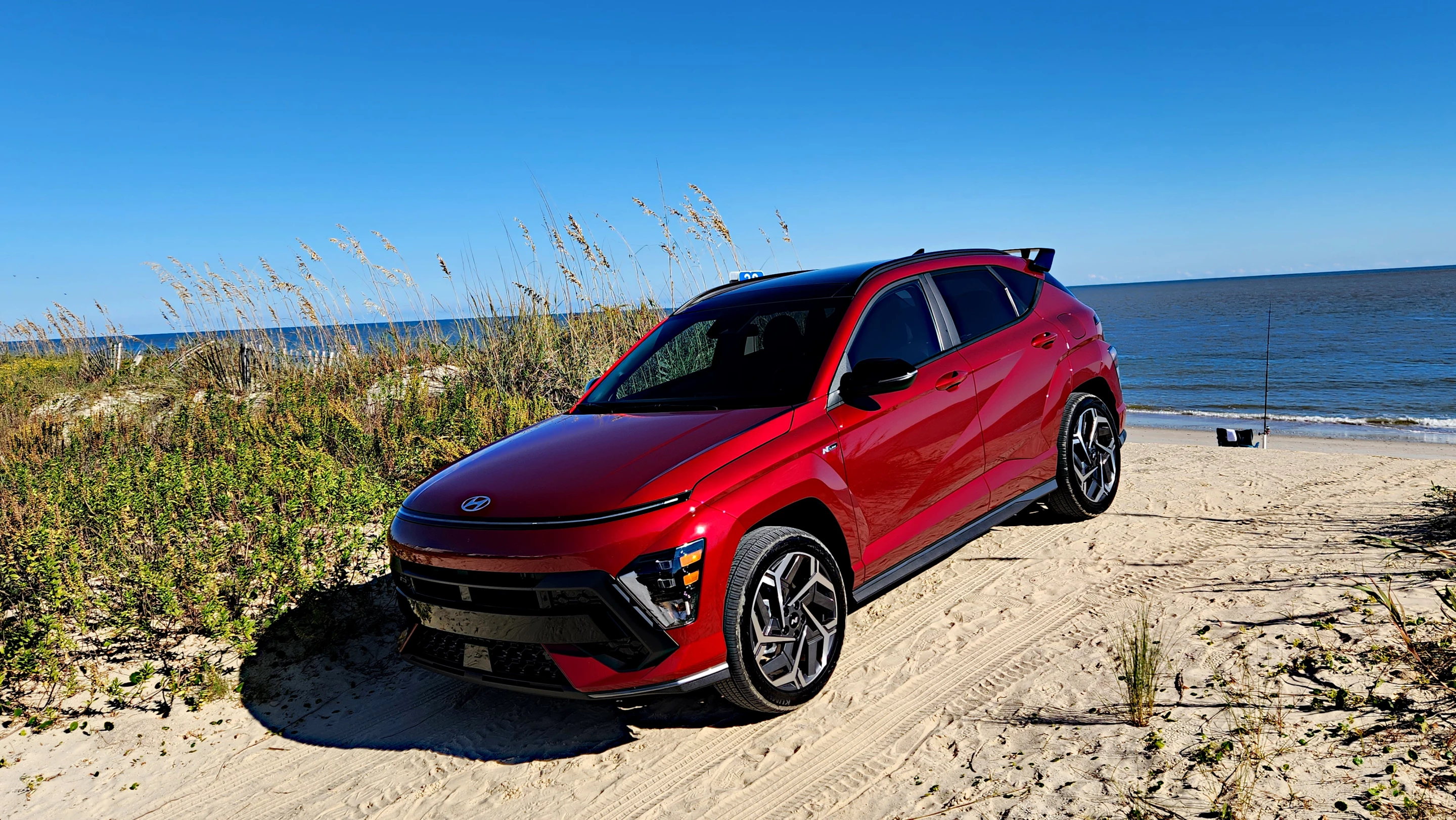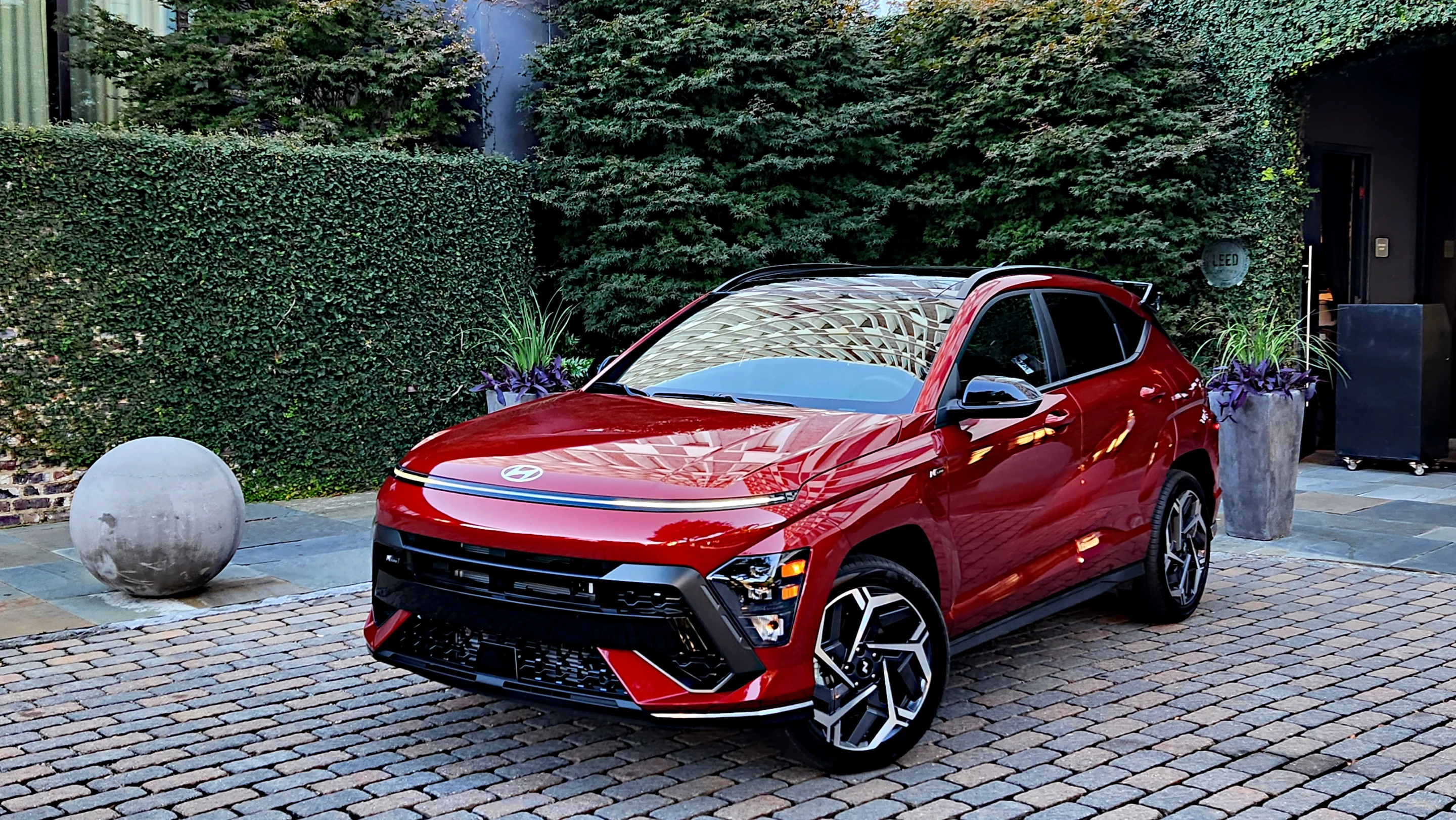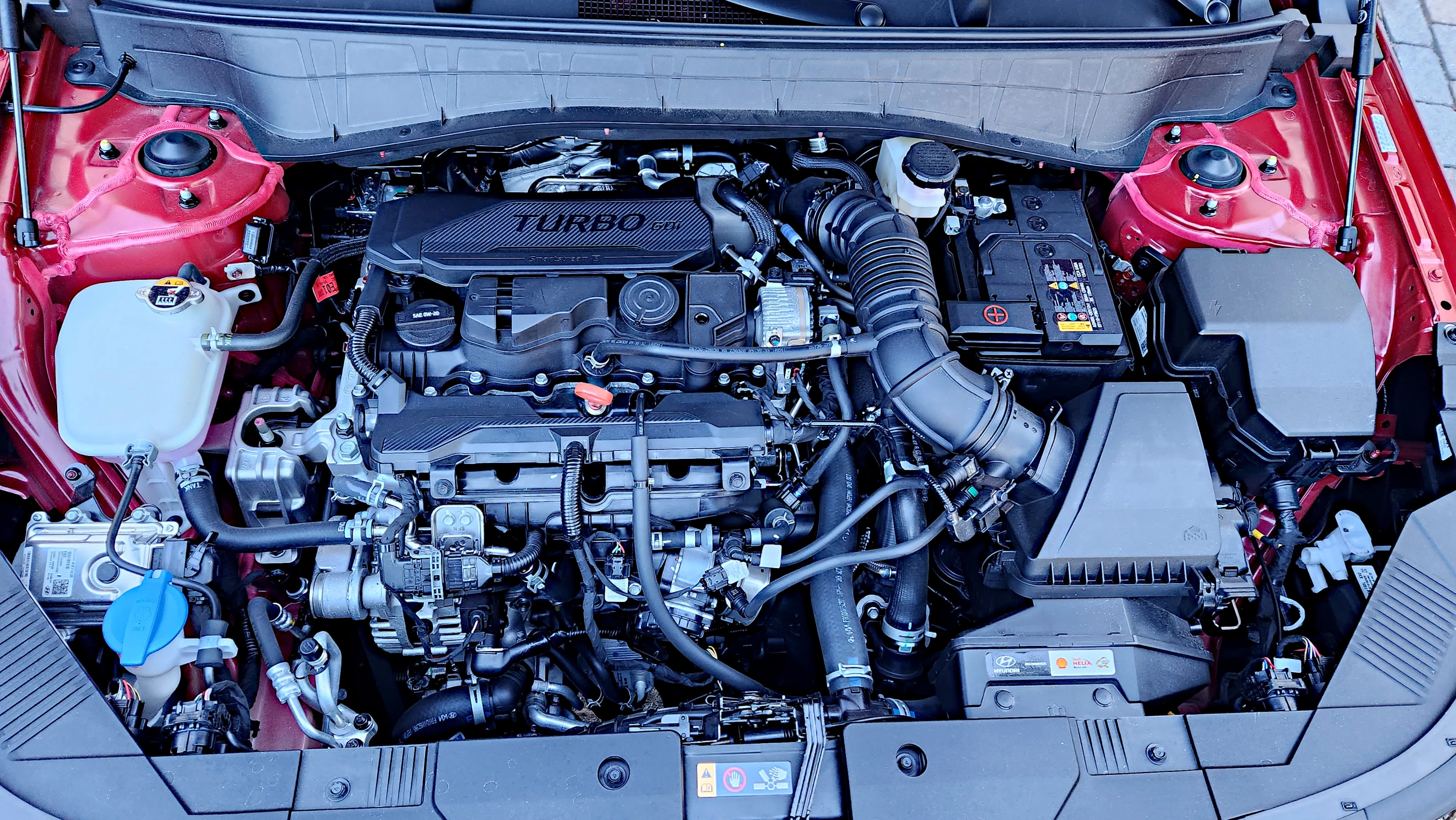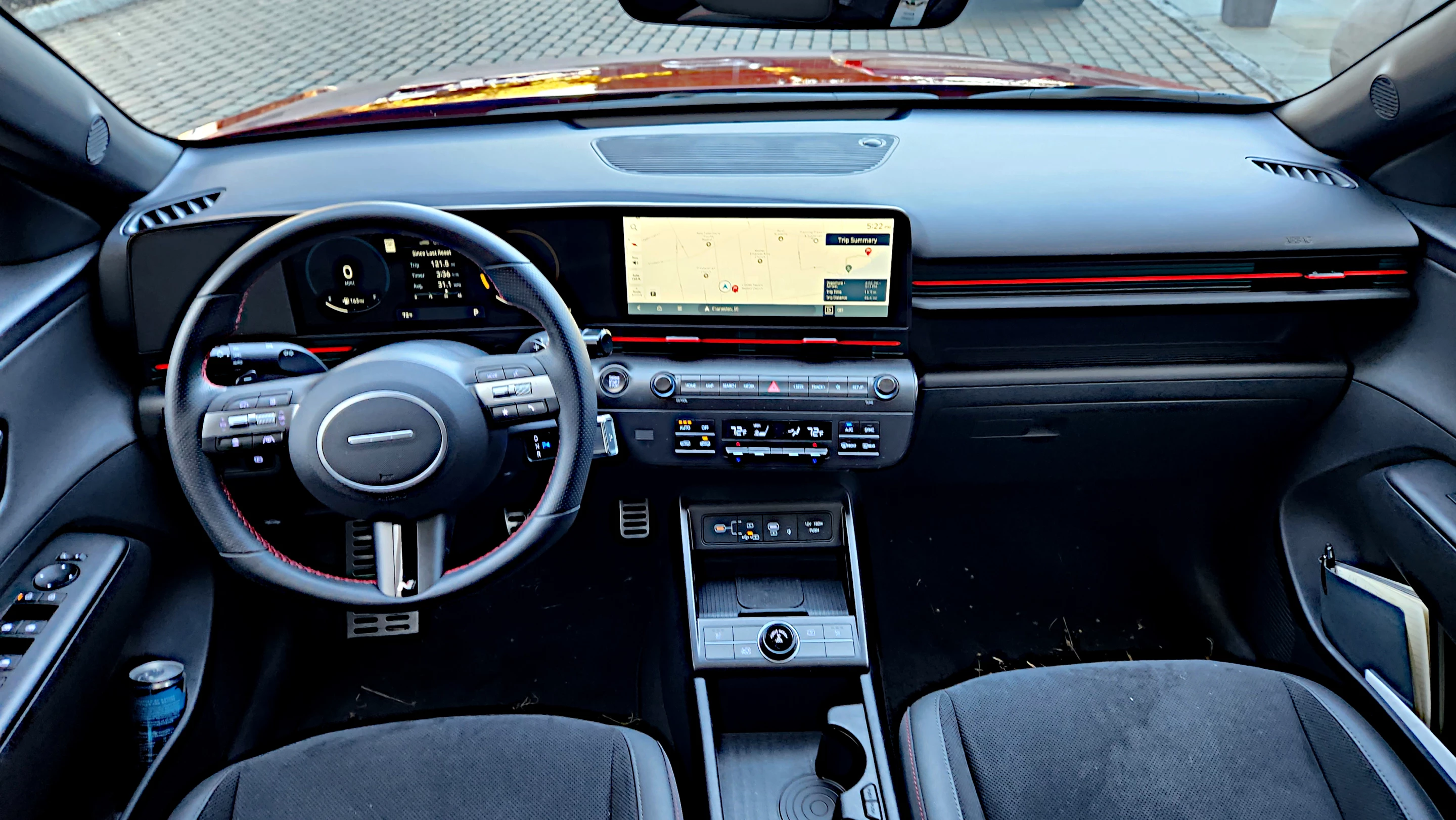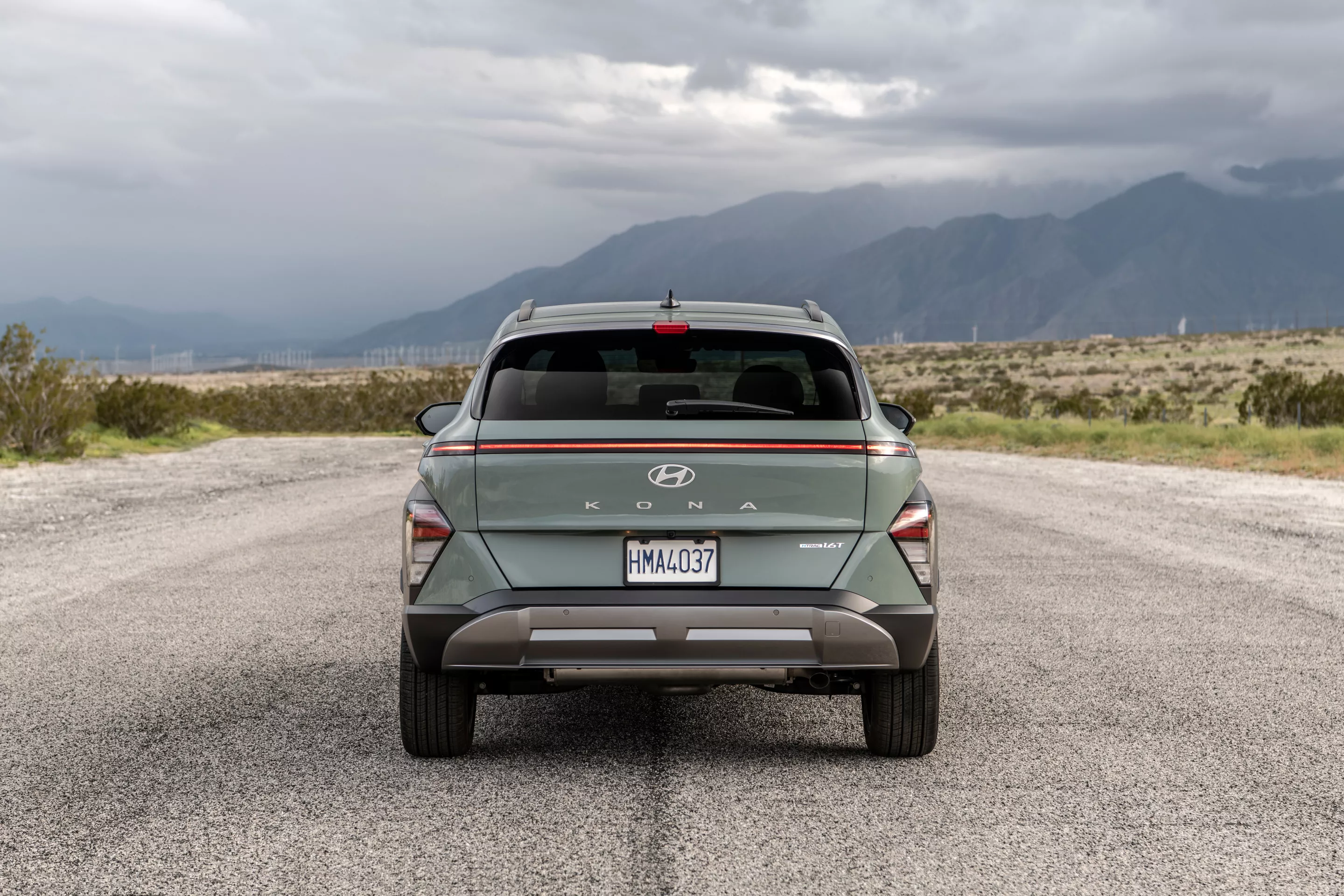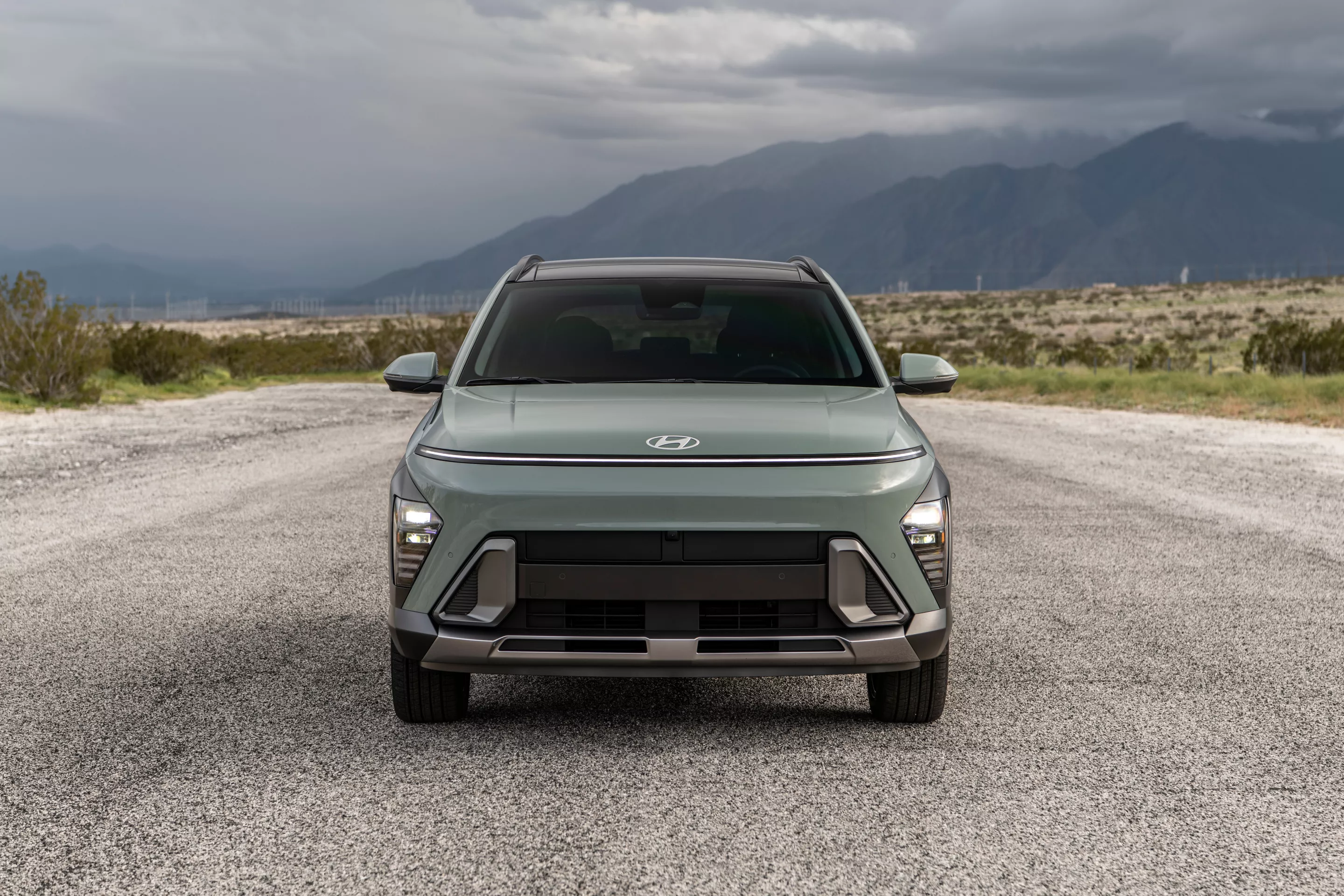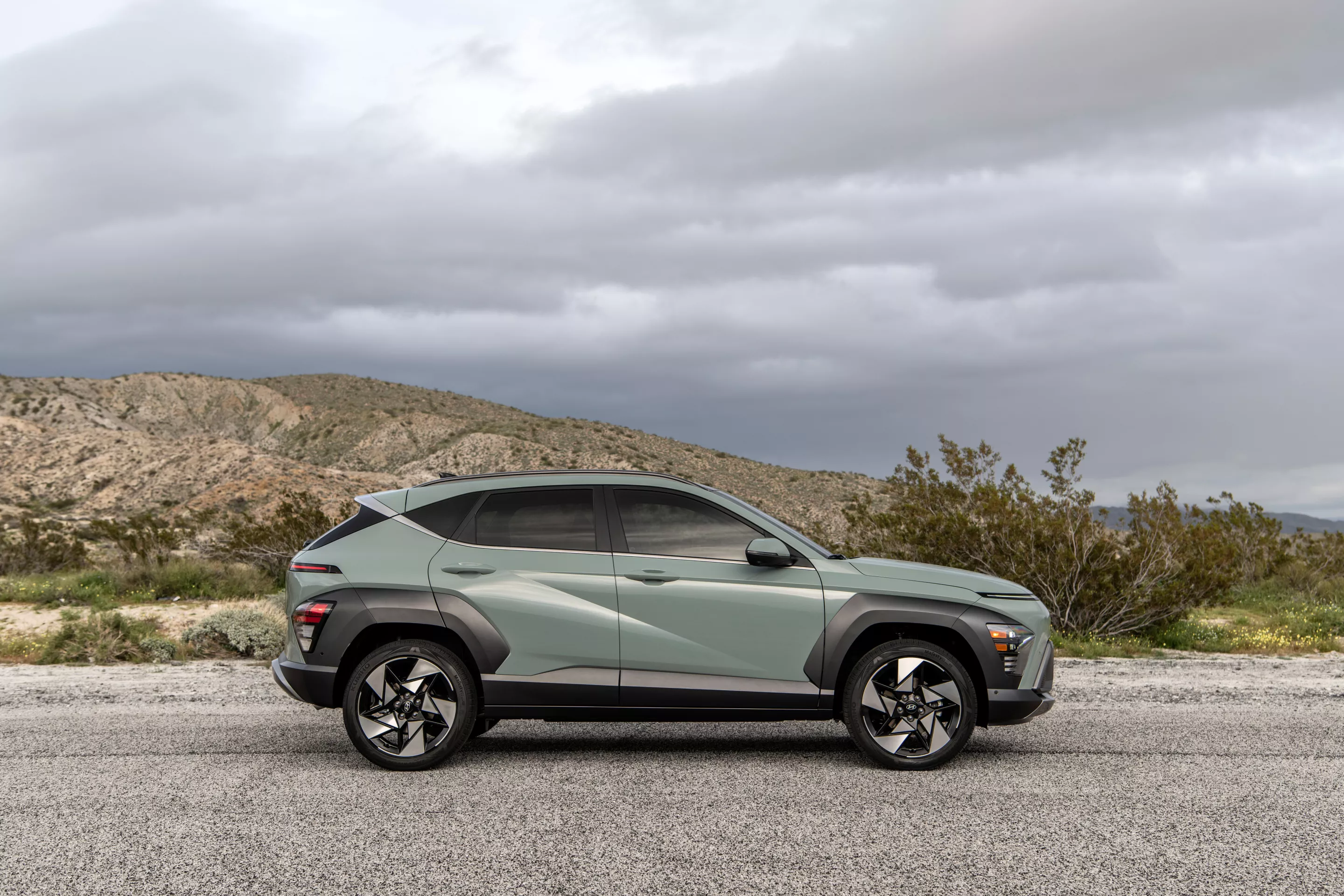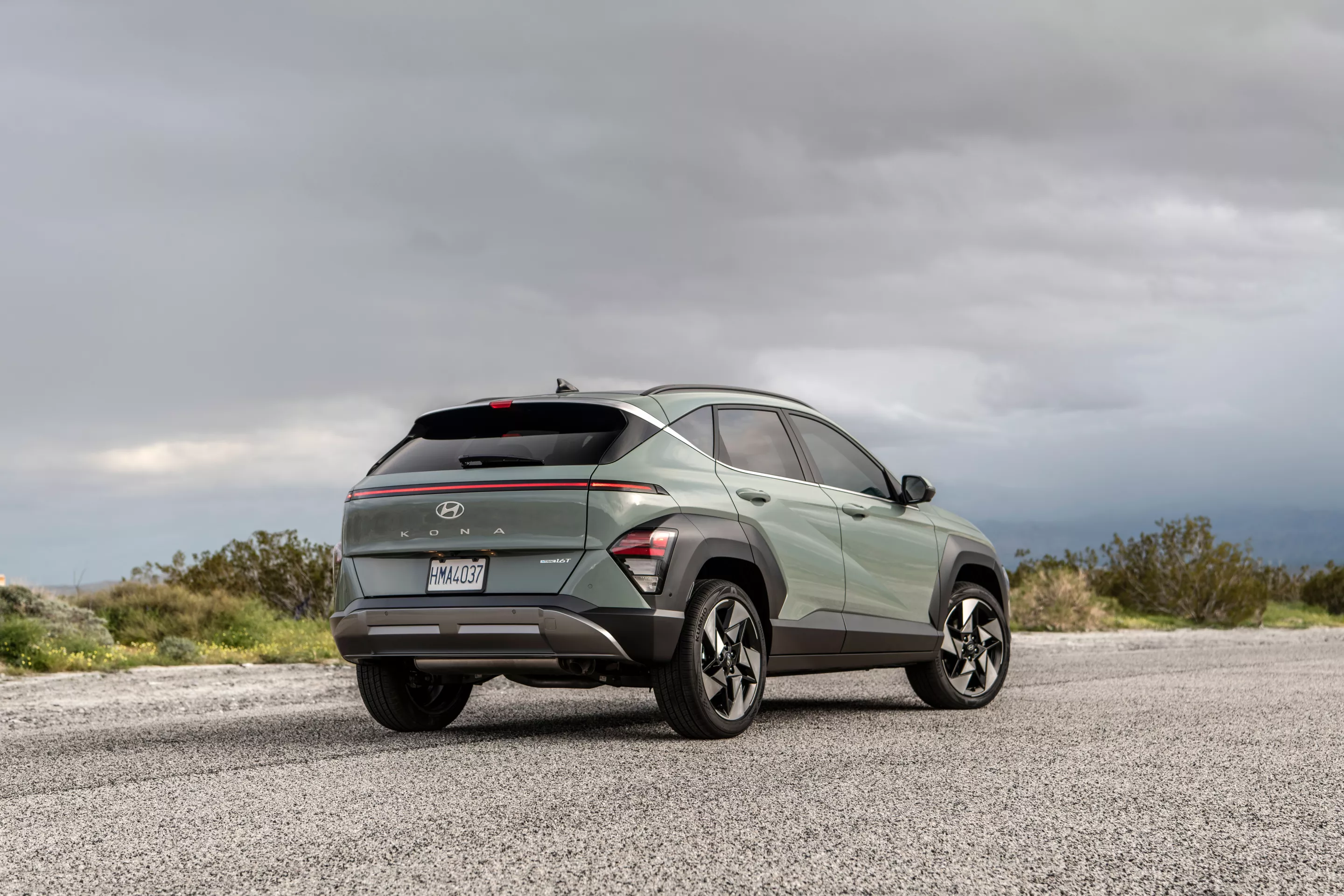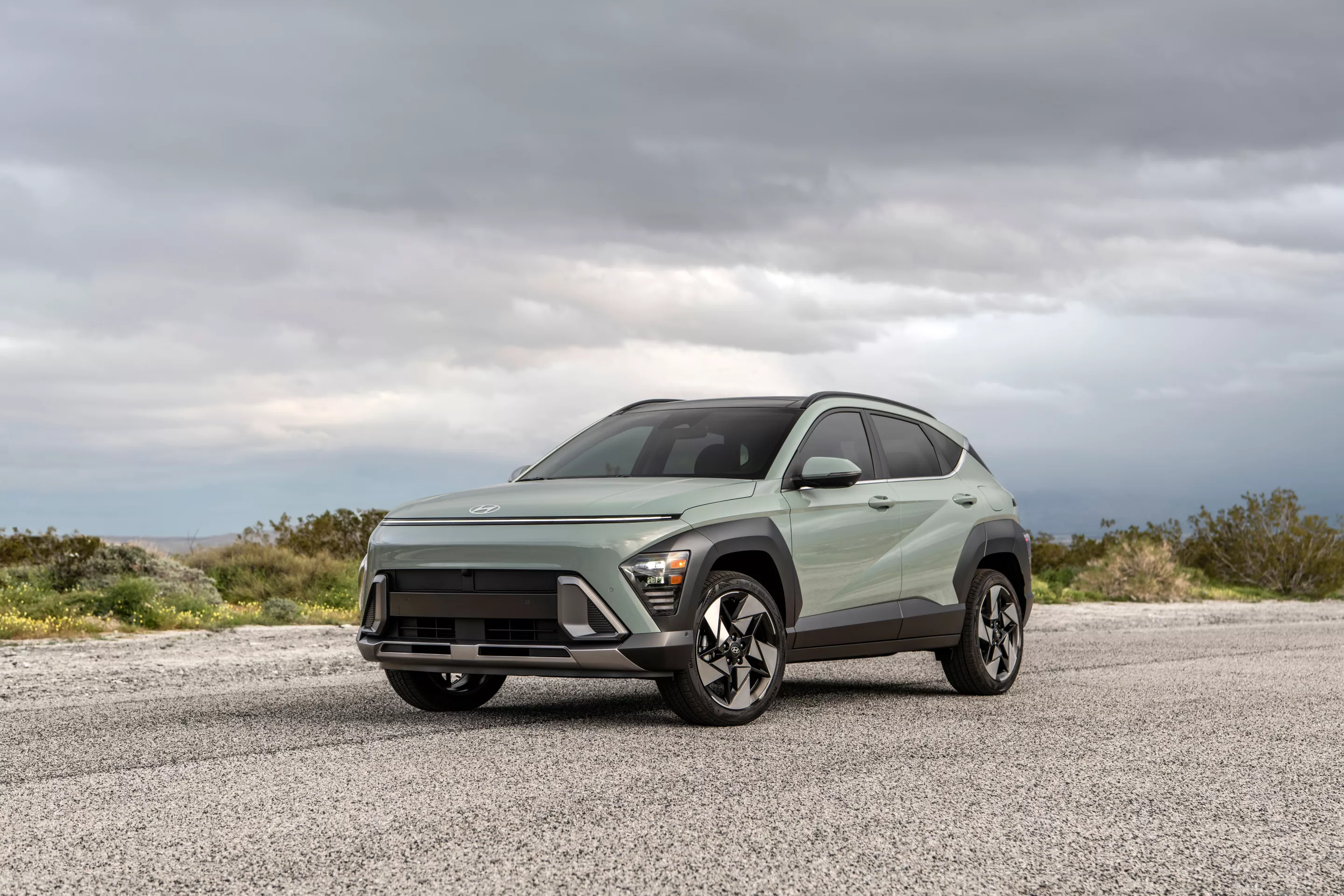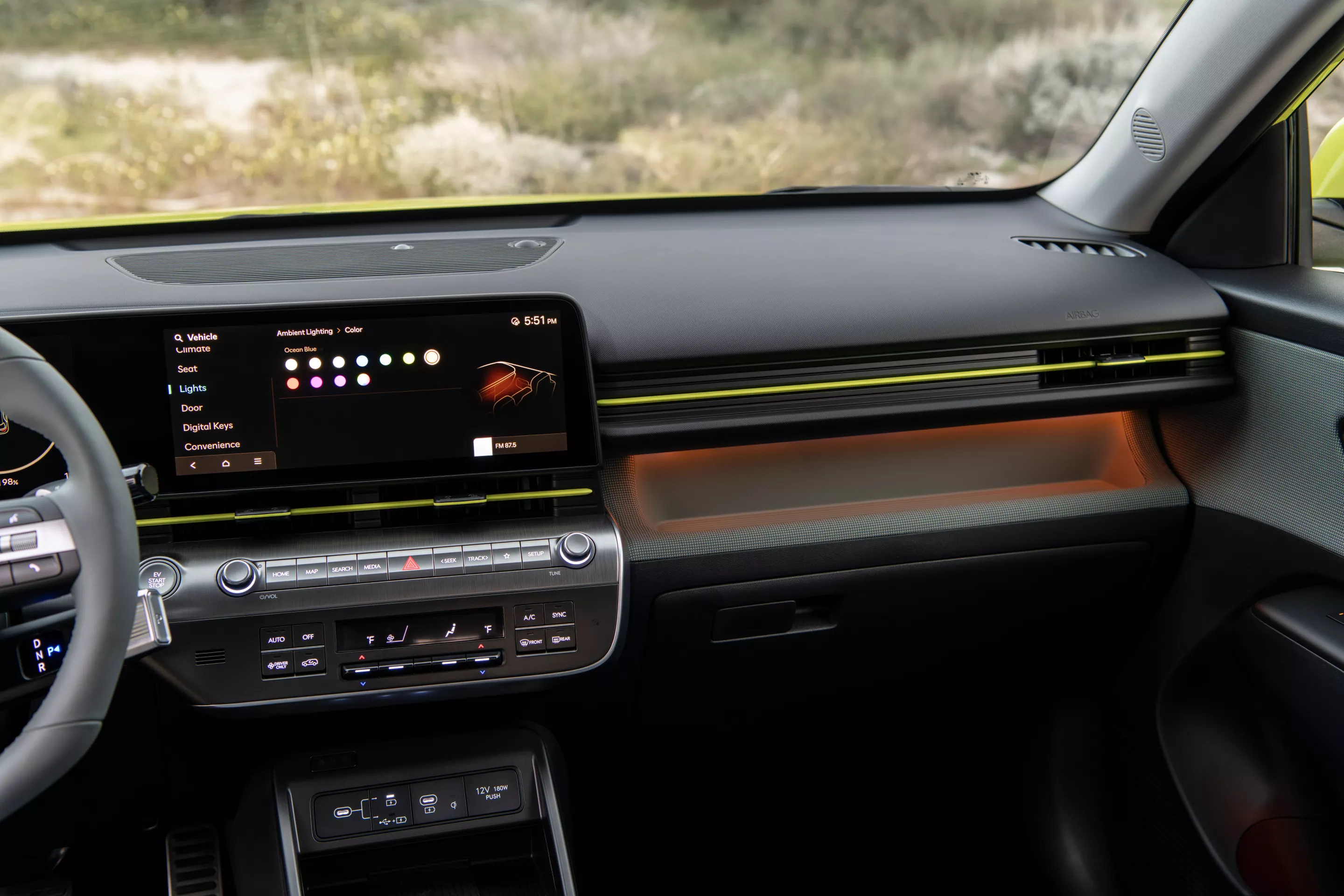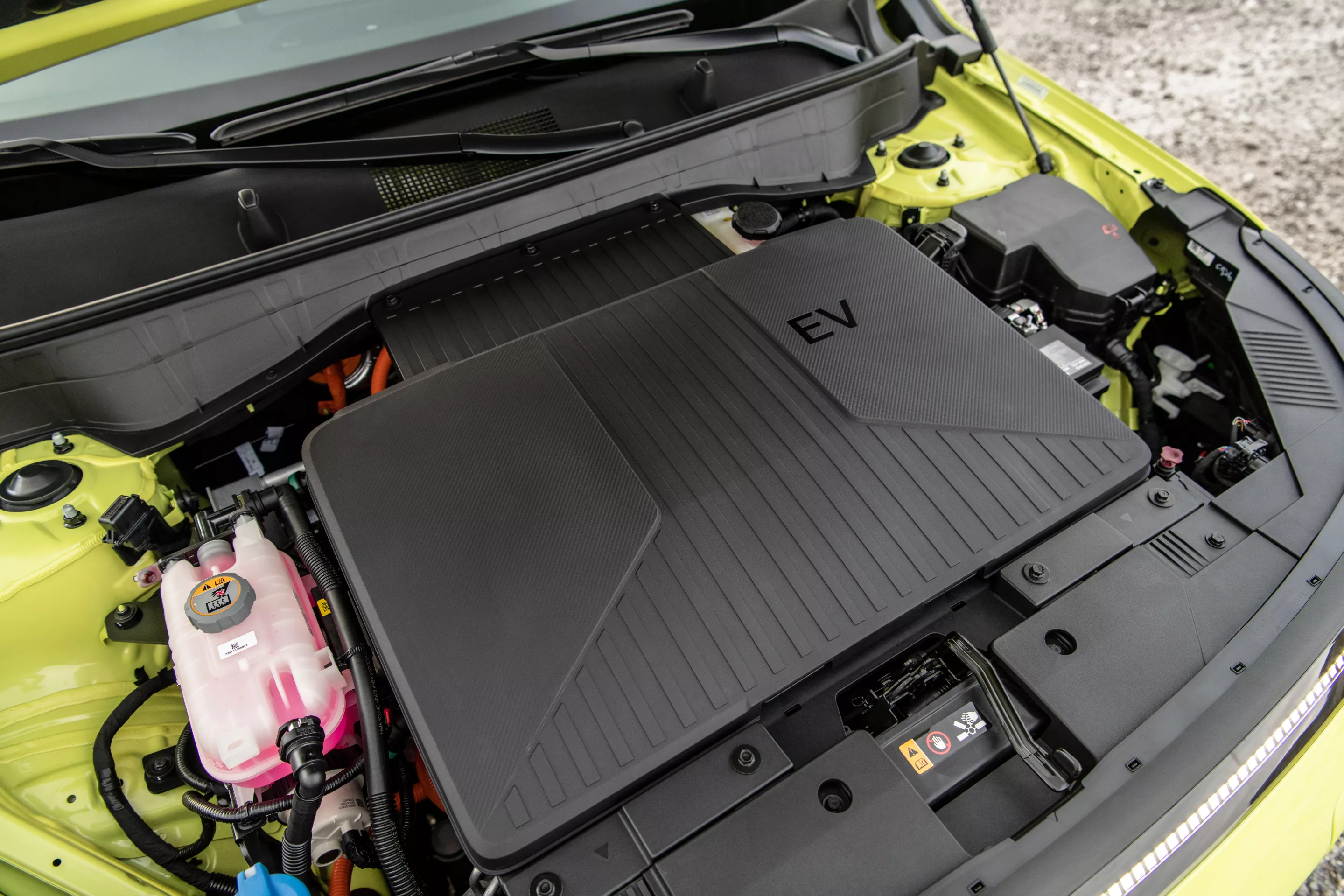Hyundai has completely redone the Kona from the ground up. Still a compact, the Kona is now a bit larger to accommodate more rear-seat legroom, cargo space, and to make for a more EV-focused platform for electrification.
The Kona models that we drove were the gasoline-fed iterations using a 1.6-liter four-cylinder engine turbocharged to 190 hp (140 kW). However, that maximum output comes at 6,000 rpm, so most drivers will only rarely see it. The 195 lb-ft (264 Nm) of peak torque comes much earlier, at just 1,700 rpm – roughly the point the turbo really kicks in. This wide span between peak outputs makes a lot of work for the eight-speed automatic transmission that's tasked with making up the difference.
In everyday driving, that difference is not noticeable very often and the Kona plugs along just fine with its engine. The early torque means that after the inevitable turbo lag has gone, the little car feels pretty good to drive. It’s only when the throttle is pressed and a downshift or boost of power is requested that the transmission gets confused and pauses in response.
Unlike the previous generation of the Kona, however, this new platform is made primarily as an electric vehicle, with the gasoline option being a bit of an afterthought. Although gasoline options are hitting showrooms first, it’s the EV that is really the focus for this one. We’d hoped to drive that when Hyundai asked us to sample their new Kona, but will have to wait until production brings it to the U.S. It’s currently just rolling out in Korea.
The gasoline-only models, which include several trim levels with the two powertrains, are hitting showrooms in November 2023. Front-wheel and all-wheel drive versions are in the offing for all of them. Aside from the 1.6L we drove, there is also a 2.0-liter four-cylinder in an Atkinson’s cycle that utilizes a type of continuously variable transmission (CVT) that Hyundai calls an “Intelligent Variable Transmission” (IVT). The 2.0L models return about 31 mpg (7.6 l/100km) on the highway, while the 1.6L turbo is rated at 28 mpg (8.4 l/100km) highway. We did not have the opportunity to truly test those EPA estimates in the real world during our brief time with the car.
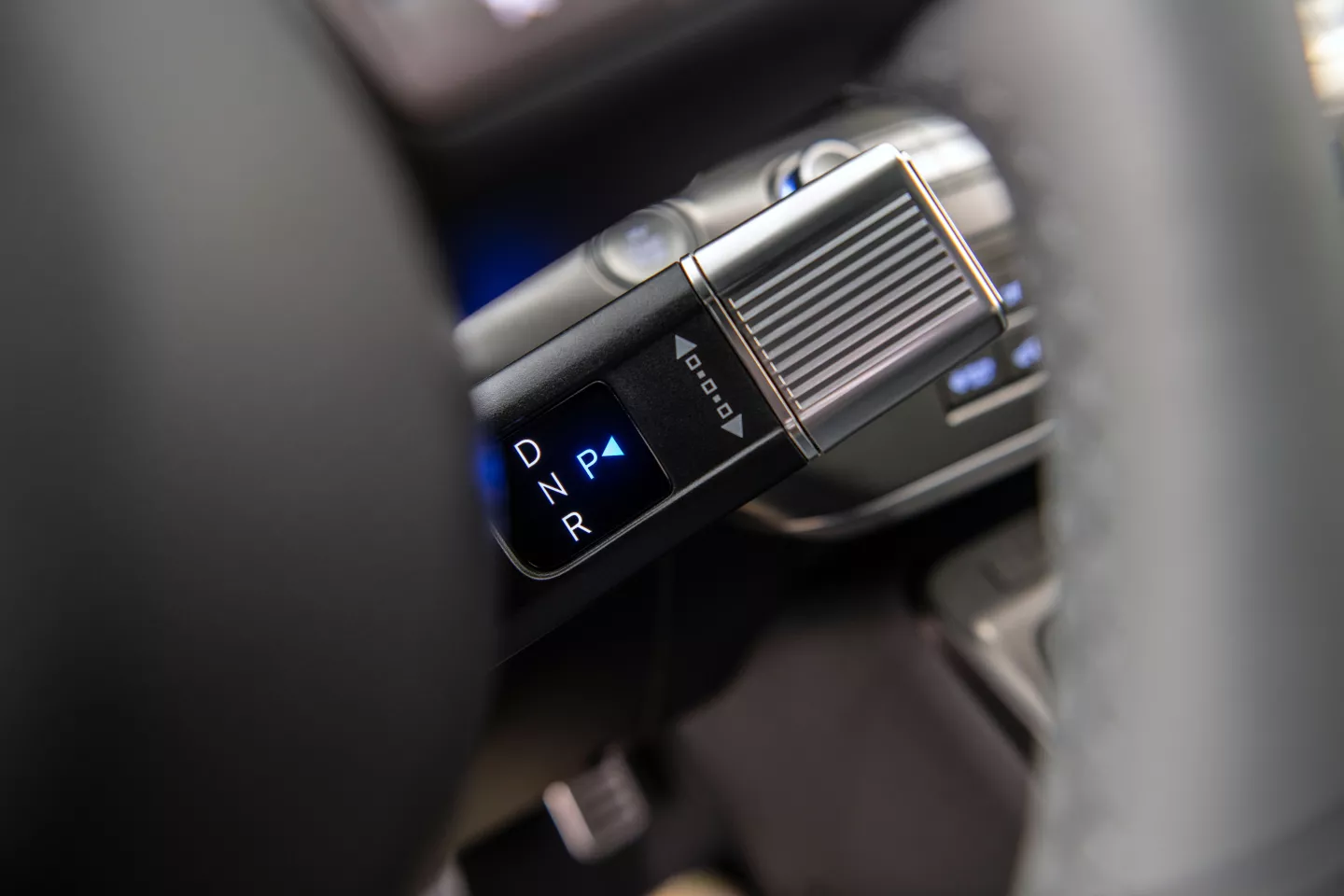
For the electric version, the 2024 Kona will have a 150-kW output and a 64.8-kWh battery for an estimated 260 miles (418 km) of range. A lower-cost option with a 48.6-kWh battery with a smaller motor and much shorter range (Hyundai did not release an estimate) will also be offered. The EV models will be able to recharge from DC fast chargers as well as return power to home or grid.
New things for the Kona also include vehicle dimensions and interior room. The Kona is now 5.7 inches (14.5 cm) longer, about an inch (2.5 cm) wider, and a smidge taller. Despite this broadening of the Kona, though, its drag coefficient is lower, at 0.27. The larger size means more interior room, most of which will be noticed by back seat passengers. At 6-ft, 3 in (1.9 m), I fit just fine in the back seat with headroom to spare and legroom aplenty. The front seats have even more. Cargo space has expanded to 25.5 cu ft (722 L). And the EV will have a frunk with an additional cu ft (27 L) of space.
The interior space itself is revamped, with a lot of changes to add newer technologies. Higher-end models, including the Kona EV, have 12.3-inch screens for both the driver and the infotainment at the center console. The driver’s information screen includes a digital gauge display, while the infotainment includes sharper, faster-responding screens. We had a tough time getting Apple CarPlay and Android Auto to work without a plug in our pre-production tester, but have not had similar issues in other new Hyundai models, so we suspect that is a problem with the prototypes we drove, not the production model.
To make more room in the center console for traditional buttons and switches as well as wireless charging and drink holders, Hyundai moved the Kona’s shift lever from the console to the steering column. It protrudes on the lower right of the steering wheel and takes a while to get used to. It’s easy enough to adapt to shifting there, but having to duck and crane one’s neck to see it isn’t ideal. As confidence grows with use, though, this will be no different than getting used to the Mercedes-Benz dongle shifter or the various push-button shifting used in several other brands. Even the weird shift horn on the Volkswagen ID.4 becomes second nature after a while, so this oddly-placed option Hyundai chose won’t be anything more than an initial quirk for most owners.
Overall, the changes made to the new 2024 Hyundai Kona are positives. It has a few quirks and things that will require adjustment, but they aren’t the kinds of things we’d flag as deal breakers. We were disappointed that the electric model was not available to drive, but will get into one as soon as it’s made available. If the changes to the Kona gasoline-only models were any indication, we expect the Kona EV will be a great addition to the market as well.
Product Page: 2024 Hyundai Kona
